Capri is the prettiest island in Europe but bring your banker and … do you like crowds?

CAPRI, Italy — The Roman emperor Tiberius once had a villa atop a cliff here. Legend has it, back in the 1st century A.D., he’d throw his enemies off it. Looking up at the stone remains of the villa from a boat passing below, I’d say the fall is about 3,000 feet straight down.
At least his enemies ended their lives with one of the best views in Europe.
You hear about Capri growing up in the U.S. It’s one of those European islands and beach towns that transcends oceans and cultural gaps, kind of like Tuscan villas and Heidi Klum. Saint-Tropez. Portofino. Ibiza. Capri (pronounced CAH-pree) is where I’d be scared to show up without $500 loafers, a designer sweater over my shoulders and a tan.
I showed up for a quickie weekend trip in purple cargo shorts, a turquoise golf shirt and the pasty complexion of a Rome resident who hid from the afternoon humidity all summer. Turns out, I blended right in. Capri is about as exclusive as Baggage Claim in Rome’s airport. I have never seen so many people crammed on one rock in my life. It’s only 4 x 1.8 square miles and attracts 10,000 tourists a day. Nothing in Greece in July compares. It was like all the immigrants in the history of man came to Manhattan Island at the same time.
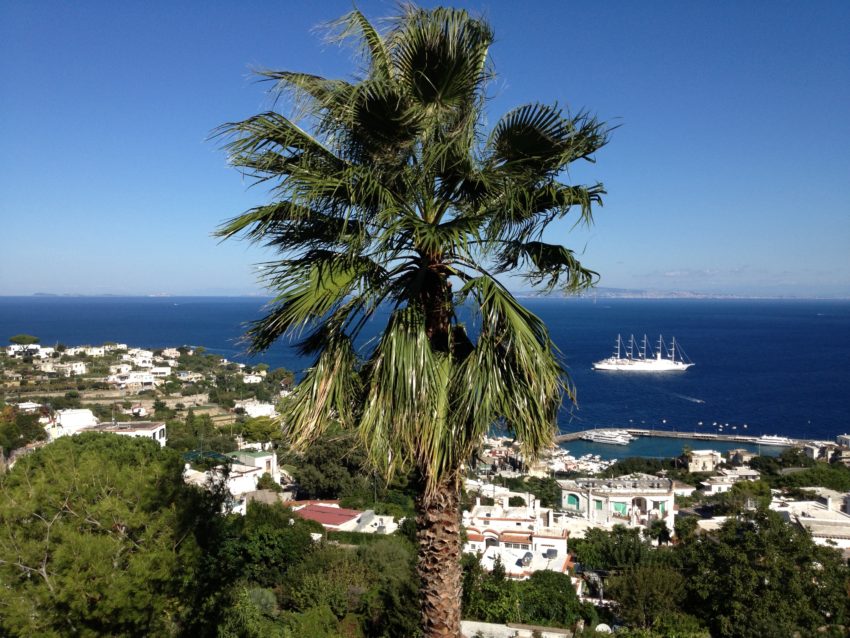
I learned quickly there’s a good reason. I don’t like buying hype. It’s like lobster. It’s good but never quite lives up to its billing. But believe me on this.
Capri is the prettiest island in Europe.
I’ve been to so many: Santorini. Ischia. Mykonos. Sicily. Sardinia. All through the Kvarner Islands in Croatia. Nothing is like Capri’s towering cliffs that descend through olive and pine trees into a sea so clear and clean I could drink it. But I’d get sick. It’s too warm. I languidly floated in a Tyrrhenian Sea that’s the blue of an Italian summer sky. I looked down through the depths at an ocean bottom that seemed five feet away instead of 20.
Every turn up the mountainous little isle produced a view more spectacular than the last. Little rocky coves with sunbathers basking next to the sea. Ancient villas sticking out over cliffs with views clear to Naples 26 miles away. Expensive yachts lining a bustling port with tony shops and outdoor cafes. If you put together the minds of Bernini, Neptune and Prada to design an island, it would look like Capri.
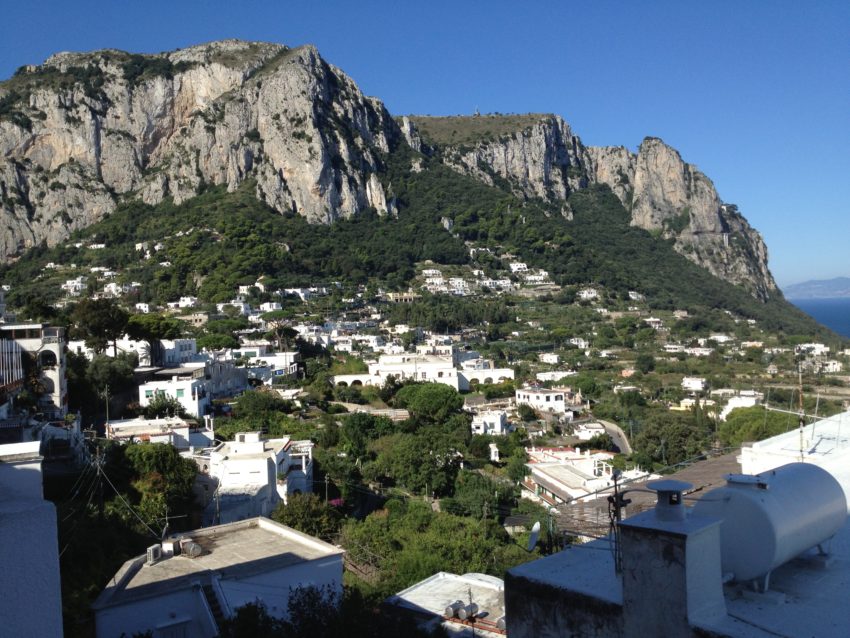
I stayed in a bed & breakfast that was “only” 120 euros. By Capri’s price scale, that represents your basic closet. It wasn’t. Alle Ginestre sat at nearly the top of the island. From the lounge chairs on my front porch I could see across the sea all the way to Naples and Mount Vesuvius. Whoever stood at that spot in 79 AD had a great view of the sea of smoke and lava that buried Pompeii into eternity. Instead, I saw cruise ships steaming to their next port of call and olive trees swaying in the warm breeze.
In nearly nine months in Italy filled with spectacular views, hikes and landscape, Capri may have topped them all. Just looking at the scenery made me feel pampered even though I was “slumming” it at Alle Ginestre. The prices, crowds and souvenir shops faded into oblivion as I gazed down at the sky blue sea flowing past the cliffs and trees and cafes.
There are three main parts of Capri: Capri town which has the major port, Anacapri which is the island’s other main village high up on the hill and the countryside. Capri and Anacapri have had a centuries-old rivalry as THE place to go. Capri town looks like a playground for millionaire yacht captains. Piazza Umberto I is enclosed by outdoor cafes. An 18th century clock tower hovers above a neat collection of white stone buildings. The narrow, windy roads closed off to traffic are lined with Prada, Gucci and Bulgari outlets among others. Tanned tourists with designer sweaters and shades nearly as expensive nibbled on piles of mixed green salads and pasta dishes with porcelain cups of cappuccino at their side.

Anacapri is much more laid back. It is to Capri town what Manhattan Beach is to Beverly Hills. It’s spread out over a half dozen streets. School children in matching uniforms run across narrow roads with minimal traffic. Local craft stores and lazy sidewalk cafes in understated piazzas replace designer outlets although the prices aren’t much different. I stopped at a sidewalk display of hand-painted oil and vinegar canisters. The price tag said 15 euros. I asked the pretty clerk if the 15 euros was for the canisters and matching base or for each individual part. She said it’s for each of the three for a total of 45 euros. After a polite thank you, I started walking only to get shouted down by the elderly manager who came out to straighten the display. “This is local. This is Italian. If you want Chinese, go up the street.”
Other than that raging swine, the people of Capri, the Capresi, were remarkably nice. This isn’t life in a fishbowl. It’s life in a sardine can. It’s that crowded. The Piazzetta had so many people preening, strolling, eating, diners seemed to swing their forks away from people’s asses to reach their mouths. The little buses, about the third the size of a normal school bus, go from the harbor to Capri town one level up and then up higher to Anacapri. I often waited 30-45 minutes to find space on a bus and that was only space enough to breathe.
Swimming in Capri’s sea is one of the remarkable experiences in Italy. But swimming to Naples is less of a challenge. Capri has no beaches. It is surrounded by rocks, big, black boulders and tiny sharp pebbles. They accompany every majestic cove. Want a day at the beach? Fine. Lay your beach towel over a flat piece of rock. It’s a beach only an Indian fakir could love. And every cove is packed. I went to one private beach that charged 21 euros for a lounge chair. All the lounge chairs were full. Could I pay 21 euros just to lay down my towel? The stocky beach boy laughed and waved his hand at the mountain of rocks beyond the overpriced cafe where I stood. He was right. I couldn’t see one 3 x 4 foot rock free to place my towel. I finally found a public beach with a bit of sand scattered along the rocky shore, kind of like sprinkling confetti on New York’s Fifth Avenue. I laid down nose to feet and feet to nose with a couple hundred other sunbathers for two hours. However, the warm, clear waters made tight-roping along the rocks well worth it.
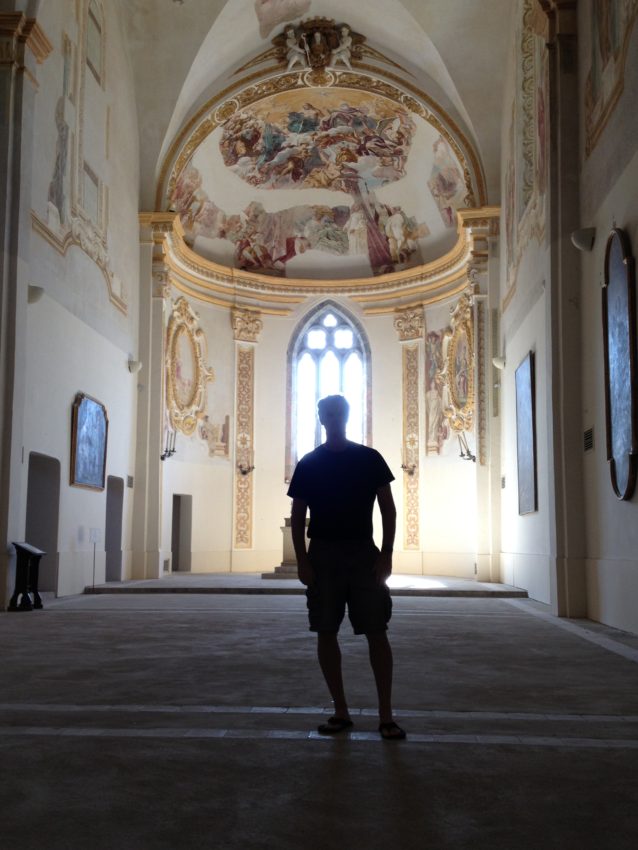
And it was one of the few things free in Capri. The prices here are comical. I dropped by La Scalinatella, one of the many five-star hotels scattered around the island. The airy lobby looked like a sculpture museum. On the patio overlooking the sea, a well-groomed man in his ‘50s with a white shirt and lime green sweater carefully looped just right over his shoulders, stared through designer shades at an equally well-coiffed redhead. Their breakfast bread basket surely cost more than the yearly diet budget of some villages in Haiti. Looking totally unconvincing in a swimsuit that passes for shorts only because they’re black and white Polo shirt, I asked for the rate card. Then I asked for a sedative. The cost for a double room was 480 euros. That’s the cheapest available. It’s 640 for a deluxe and 830 for a junior suite.
“But the rates go down tomorrow,” the desk clerk said.
One store sold a swimsuit similar to mine only with some haphazard white stripes for 168 euros. A bag at Prada was 1,600 euros. A black and red dress was 3,800. You don’t need a bag to go shopping here. You need a loan officer.
The best bargain on the island was the 18-euro boat tour that circumvents the island in an hour. On my particular ride, a hilarious Italian tour guide gave a history to a boatload of sunburned, pudgy English tourists. Bald as a cue ball, the tour guide pointed out one arch where, legends has it, if you kiss your significant other as you go under, you will stay with her forever.
“Men,” he said, “think TWICE before you make a move.”
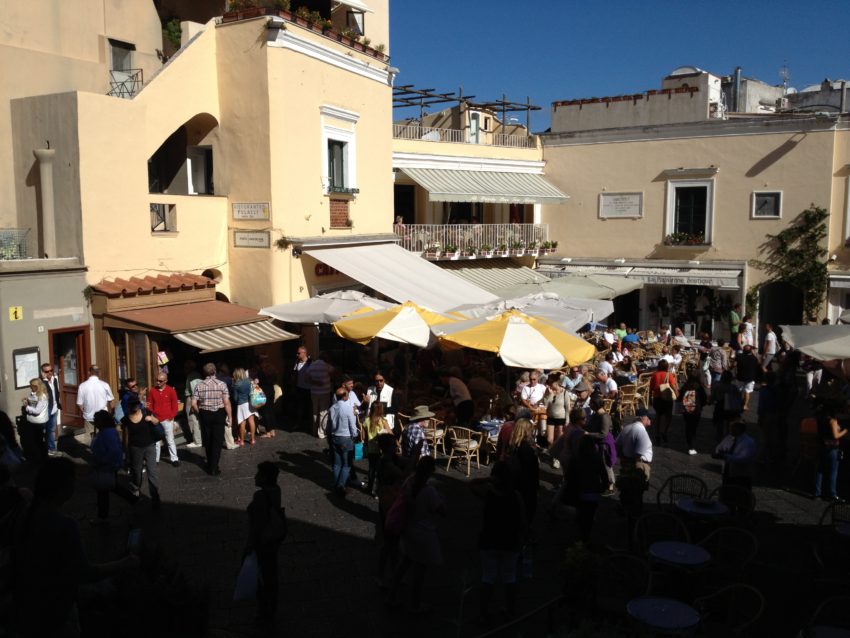
But he was a wealth of information. He pointed out a bevy of watch towers used to fend off attacks from the Turks and Greeks. During the Roman Empire, the reclusive Tiberius built 12 villas, all of which he hopscotched around during his manic paranoia of assassination. (Footnote: Tiberius was eventually smothered to death, producing rousing roars from the Roman citizenry) After the fall of the Roman Empire, pirates ransacked Capri right down to its seashells, burning the island seven times. Then came a string of colonization from the French to the English, back to the French and eventually to Sicily in 1813. In the late 1800s, celebrities discovered it and Norman Douglas wrote his famed novel, “South Wind,” a slightly fictionalized characterization of the beautiful island and its gentle people.
Then the mass tourism began. British actress Gracie Fields had a villa on the cliff and it eventually turned into the most expensive restaurant in Capri. More than 60 years ago, limestone cliffs near the harbor collapsed, wiping out one swath of prime swimming area. Erosion remains a problem today.
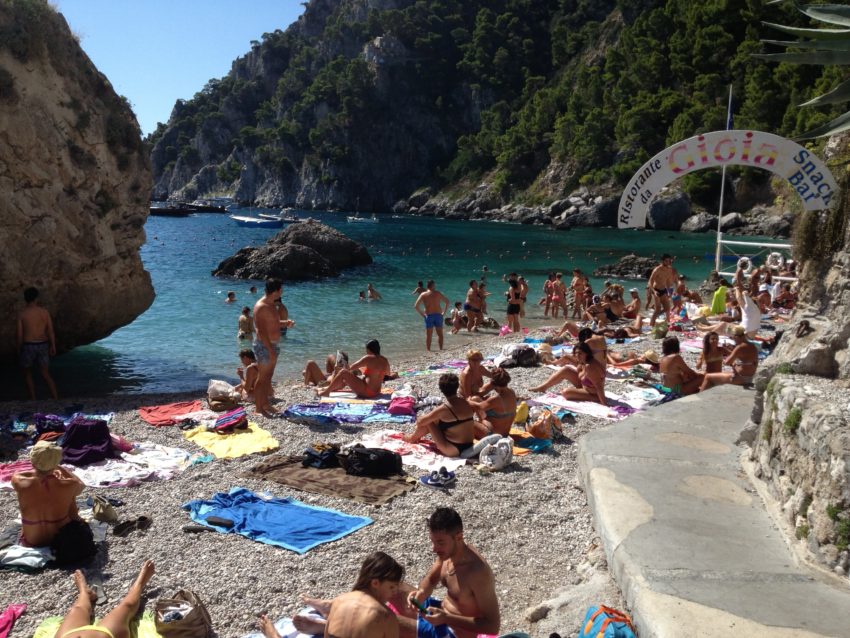
At the end of my stay, I asked my B&B owner, a fast-talking Neapolitan who still spends his winters in Naples, about the best time to see Capri. He said now.
“Now?” I said. “It’s packed with tourists. I saw ball caps from the entire Big Ten.”
“You should see it in August.”
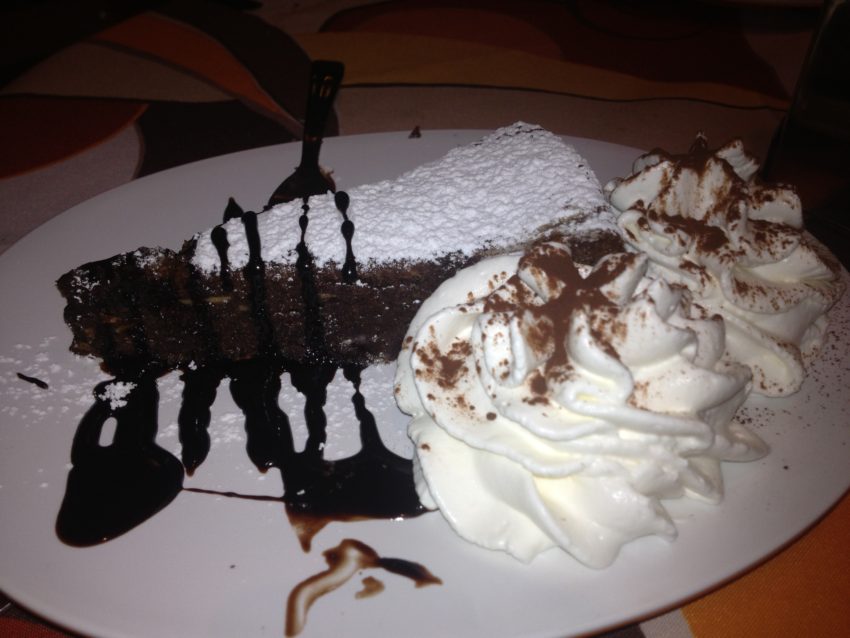
No thanks. But I will be back. You can’t let crowds stand in the way of beauty. We all get good views and there’s a reason we look. You don’t need $500 sunglasses to see Capri.


October 10, 2014 @ 12:29 pm
I agree. Capri is stunning. Was on the Amalfi Coast this week for the first time in 10 years. Even though I’ve been 3 times before, I still was absolutely AWED by the beauty. Jaw dropping, breath taking. Over the top gorgeous. Just the way Italy should be.
December 5, 2014 @ 3:06 pm
John, nice blog. How about the chairlift to Monte Solaro. For me was the best attraction in Capri. Fancy shops are around in fancy coast places, but no that chairlift. I felt as flying with my legs hanging down along with all these great blue sea/blue sky views Capri that offer.